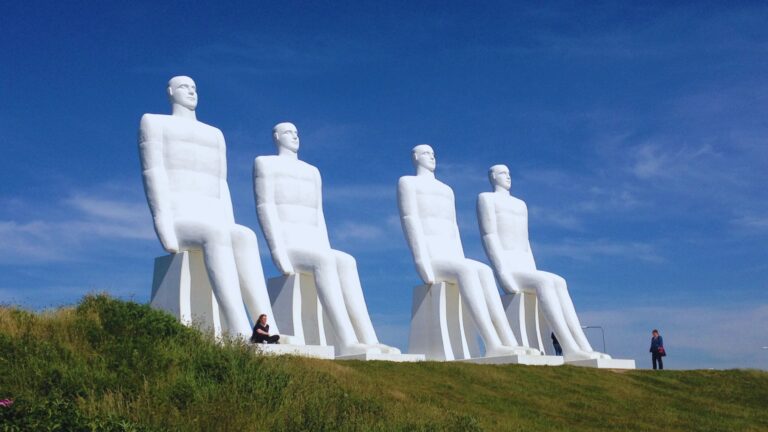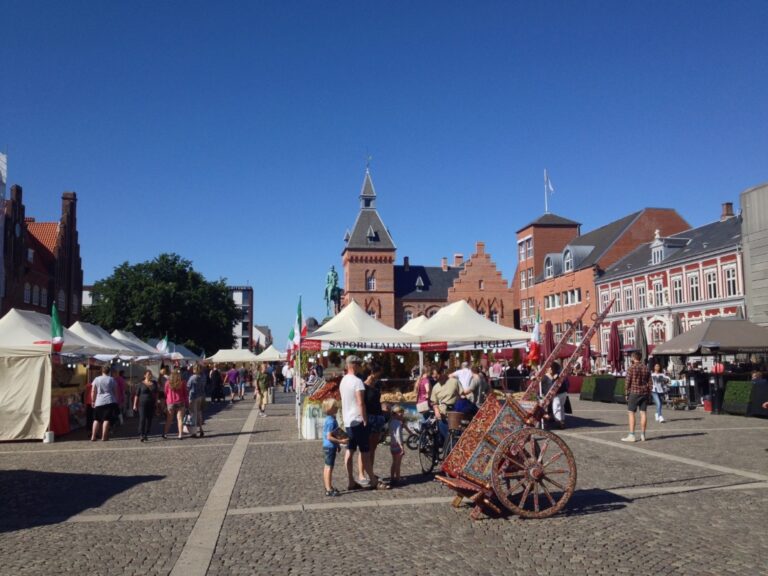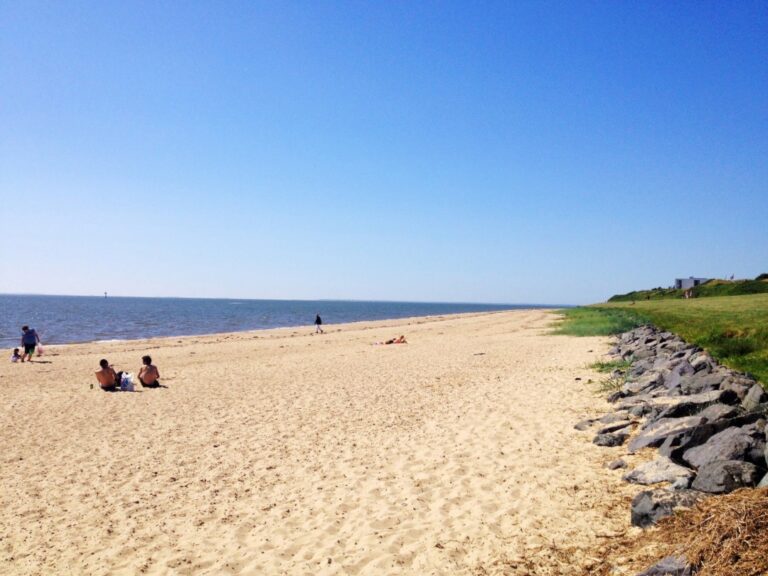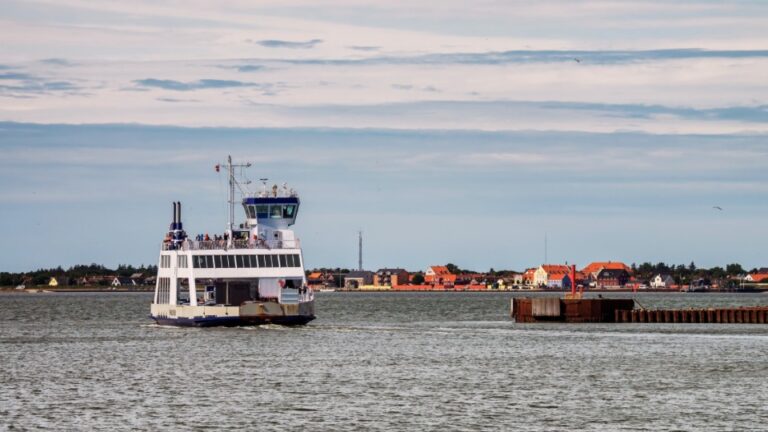Our tour of Scandinavia continues with a visit to Esbjerg, a North Sea city packed with interesting maritime and industrial history, coastal lifestyle, and an authentic Danish experience.
Think Copenhagen offers the very best of Denmark? Think again. While Copenhagen and Aarhus draw the crowds, Esbjerg—a rugged coastal city on the Jutland Peninsula—offers an authentic Danish experience that far fewer travellers discover.

With its stunning North Sea views, rich maritime history, and access to unique natural wonders, Esbjerg is a hidden coastal destination well worth a visit. From the striking Man Meets the Sea sculpture to the birdlife of the Wadden Sea, this laid-back city rewards curious visitors.
Is Esbjerg one of the best places to visit in Scandinavia? Well, I wouldn’t go that far! But, if you're seeking a Nordic destination that blends history, nature, and great seafood, Esbjerg might just be your next perfect city break.
An Introduction to Esbjerg, Denmark
Located on Denmark’s rugged west coast, Esbjerg is the country’s fifth-largest city, with a population of around 70,000.
Situated on the Jutland Peninsula, it faces the North Sea and serves as a major port city, historically built around fishing, shipping, and offshore industries. Despite its industrial roots, Esbjerg offers visitors a unique blend of maritime heritage, cultural attractions, and natural beauty.
The Maritime Legacy of Esbjerg
Esbjerg’s history is inextricably linked to the sea. Founded in 1868 as a crucial fishing and shipping hub, the city has since developed into Denmark’s leading offshore energy centre.
Denmark Travel Resources: Make the most of your time in Denmark.
🛏️ Book Hotels in Esbjerg
🚘 Car Rental in Copenhagen
🚨 Travel Insurance
👣 Book Tours & Experiences in Denmark
This is obvious from the amount of industry visible from the shoreline. Yet, despite its industrial prominence, Esbjerg retains a quiet charm that appeals to travellers looking for an authentic Danish coastal experience.
One of the city’s standout attractions is the Fisheries and Maritime Museum, an immersive institution dedicated to Denmark’s maritime traditions.
Here, visitors can explore exhibits on the country's fishing industry, admire historic vessels, and learn about marine wildlife in the North Sea. The museum also features an outdoor seal enclosure, where harbor seals delight guests of all ages.
Things To Do in Esbjerg City Centre
Esbjerg’s small city centre is home to a few notable landmarks, including Esbjerg Water Tower, a striking red-brick structure built in 1897, offering panoramic views over the city and harbour.

Nearby, Grundtvig’s Church (Esbjerg’s main church, not to be confused with Copenhagen’s famous church of the same name) features a distinctive Neo-Romanesque design.
Another highlight is Esbjerg Performing Arts Centre, an architectural landmark that hosts concerts, theatre, and cultural events.
For history lovers, Esbjerg Museum provides insights into the city’s past, while Torvet, the central square, is a lively hub lined with cafés, shops, public art installations, and hosts the occasional market.
Esbjerg’s Iconic ‘Man Meets the Sea’ Sculpture
No visit to Esbjerg is complete without standing before its most famous landmark: the Man Meets the Sea sculpture. Towering at nine meters tall, these four solemn white figures sit at the water’s edge, gazing eternally toward the horizon.
Created by artist Svend Wiig Hansen in 1995, the installation symbolizes humanity’s relationship with the sea—both in reverence and reliance. As the sunlight shifts throughout the day, the statues cast dramatic shadows, making them a compelling subject for photographers.
Gateway to Wadden Sea National Park
Beyond its city limits, Esbjerg serves as a gateway to one of Denmark’s greatest natural treasures: Wadden Sea National Park.

Recognized as a UNESCO World Heritage Site, this vast coastal area is among the world’s most vital habitats for migratory birds. Every spring and autumn, hundreds of thousands of birds make their stop here, offering spectacular birdwatching opportunities.
The park’s shifting tidal flats also make it an exciting place for oyster safaris, where visitors can wade into the shallow waters and collect wild oysters straight from the seabed.
During the colder months, the fresh sea air combined with the thrill of gathering your own seafood makes for a truly memorable experience.
Fanø by Ferry
Just a 12-minute ferry ride from Esbjerg, Fanø Island presents a charming contrast to the mainland’s industrial character.
With its endless sandy beaches, rolling dunes, and well-preserved historic villages, Fanø is a haven for nature lovers and history buffs alike. The island is particularly popular among windsurfers and kite enthusiasts, thanks to its strong North Sea breezes.
In the town of Sønderho, visitors can stroll through narrow streets lined with thatched-roof cottages, many of which house cozy cafés, artisan workshops, and local seafood restaurants.

The island is also known for its annual Fanø International Kite Festival, where the sky fills with vibrant and intricate kites from around the world.
Outdoor Adventures in Esbjerg
For those who prefer to stay on land, Esbjerg offers several opportunities for outdoor exploration.
Nørreskoven Forest, located on the city’s outskirts, provides peaceful walking trails through dense woodlands, perfect for a relaxing escape into nature.
Meanwhile, cycling enthusiasts will appreciate the extensive network of bike paths that make it easy to explore the surrounding countryside.
Another unique experience is a visit to Mennesket ved Havet (the ‘Man Meets the Sea’ viewpoint), where visitors can soak in sweeping views of the North Sea. On clear days, you can see across to the oil platforms that define Denmark’s offshore industry, a visual reminder of Esbjerg’s economic significance.
Culinary Highlights of Esbjerg
Esbjerg’s seafood scene is as fresh as it gets. Many local restaurants pride themselves on serving North Sea specialties, from buttery pan-fried plaice to classic Danish fishcakes.
Denmark Travel Resources: Make the most of your time in Denmark.
🛏️ Book Hotels in Esbjerg
🚘 Car Rental in Copenhagen
🚨 Travel Insurance
👣 Book Tours & Experiences in Denmark
The city’s fish markets offer the chance to sample freshly caught herring, shrimp, and other local delicacies. Pair your seafood with a glass of chilled Danish white wine, and you’ve got a meal that encapsulates the essence of Esbjerg.
How to Get to Esbjerg
For travellers coming from Norway, the easiest route to Esbjerg is via Copenhagen.
From Denmark’s capital, direct trains run to Esbjerg in about 3 hours, offering a scenic and comfortable journey. Alternatively, driving takes around 3 hours via the E20 motorway.
If arriving by ferry from Norway—such as to Hirtshals or Frederikshavn—you can drive to Esbjerg in approximately 3.5 to 4.5 hours.
From Germany, ferries to Rødby or Gedser provide access, with onward connections by road or rail. With efficient transport links, reaching Esbjerg is straightforward, whether by train, car, or ferry.
Have you ever been to Esbjerg, Denmark? If so, I’d love to hear your thoughts, experiences, and recommendations down in the comments.

